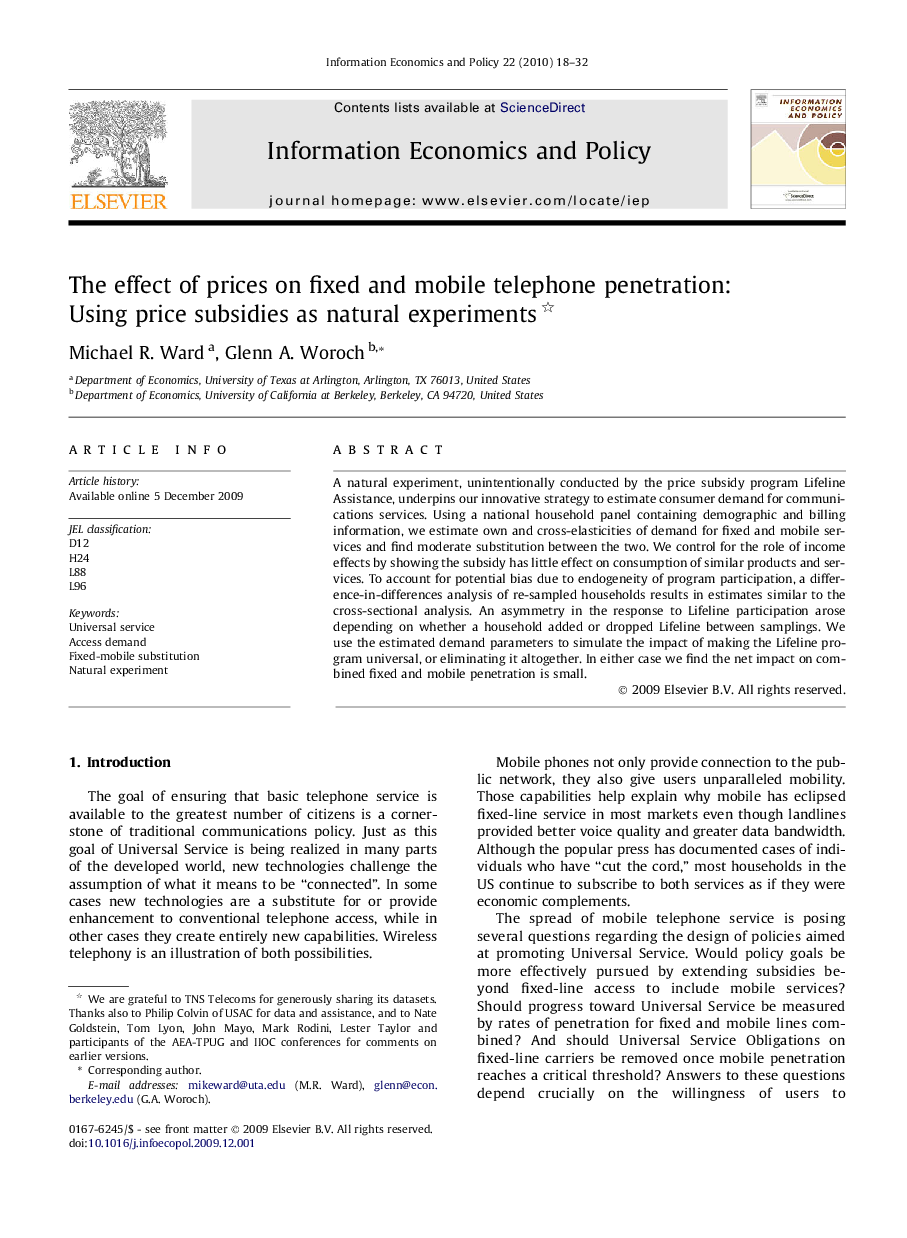| Article ID | Journal | Published Year | Pages | File Type |
|---|---|---|---|---|
| 5075954 | Information Economics and Policy | 2010 | 15 Pages |
Abstract
A natural experiment, unintentionally conducted by the price subsidy program Lifeline Assistance, underpins our innovative strategy to estimate consumer demand for communications services. Using a national household panel containing demographic and billing information, we estimate own and cross-elasticities of demand for fixed and mobile services and find moderate substitution between the two. We control for the role of income effects by showing the subsidy has little effect on consumption of similar products and services. To account for potential bias due to endogeneity of program participation, a difference-in-differences analysis of re-sampled households results in estimates similar to the cross-sectional analysis. An asymmetry in the response to Lifeline participation arose depending on whether a household added or dropped Lifeline between samplings. We use the estimated demand parameters to simulate the impact of making the Lifeline program universal, or eliminating it altogether. In either case we find the net impact on combined fixed and mobile penetration is small.
Related Topics
Social Sciences and Humanities
Business, Management and Accounting
Management of Technology and Innovation
Authors
Michael R. Ward, Glenn A. Woroch,
